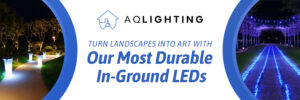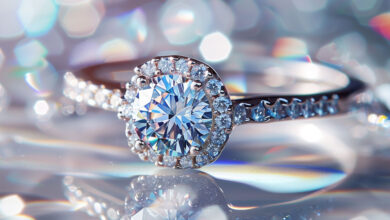
Step lights, whether used indoors or outdoors, provide safe passage and a welcoming glow. They are available as recessed wall lighting or shallow surface mounted fixtures. Embedded stair lights are recessed into the vertical risers that separate each step, and illuminate them without casting any shadows on the steps. They are also very effective in outdoor areas where the surrounding ambient light is low.
Safety
Step lights not only provide safety and security, but they also highlight the steps as an architectural feature of your home or business. LED step lighting comes in a wide variety of shapes and finishes, allowing you to find the perfect solution for your aesthetic preferences.
Using step lighting to illuminate a set of stairs helps people safely navigate the space at night, avoiding trips and falls that can occur when a person’s vision is impaired by dark surfaces or uneven surfaces. In fact, slips and falls on staircases and steps are one of the most common workplace injuries and cost employers $31 billion per year.
The right stair lighting fixture will minimize glare, making it easier to distinguish the tread from the riser. In addition, the light will help you see where the lips of each stair begin and end, indicating which side to step on and which to avoid.
Ideally, LED step lights are installed 12-18 inches above the steps to maximize their effectiveness and to ensure that they are not exposed to moisture, debris, or other environmental factors that can negatively affect their operation. Failing to adhere to these guidelines can result in harsh glare, decreased illumination and increased maintenance costs. This is why it’s important to hire a professional installer that understands the importance of proper installation and wiring techniques for your LED step lighting system.
Aesthetics
The aesthetics of an object, event, or work of art focuses on the pleasure and enjoyment derived from it. This enjoyment may be caused by the objects own intrinsic qualities (e.g., gracefulness) or by the subject matter it is meant to convey (e.g., beauty and ornithology).
Aesthetic experiences also include displeasure, namely the category of ugliness. Recently, more attention has been given to aesthetic value categories that involve both pleasure and displeasure, such as tragedy, the sublime and neighbouring categories such as awe and wonder.
Decorative step lights can be surface or recessed mounted and are available in a wide range of styles. They can be a clear or frosted lens that lets the light shine in all directions, or louvered and directional to reduce glare.
While studies have shown that consumers prefer products with more appealing designs, the connection between product aesthetics and usage behavior remains unclear. A recent study found that durable products with more appealing designs were used more intensively, and this effect remained robust across different product categories and statistical modeling approaches. These findings suggest that the links between aesthetics and consumption are important for understanding and predicting consumer behaviors. However, these findings should be interpreted with caution as they are based on market data and did not control for downstream effects such as consumer satisfaction or repurchase intentions.
Energy Efficiency
Many people consider step lights to be a form of decorative lighting, but they’re also quite functional. These types of lighting can help guide you down the stairs safely, preventing accidents and injuries. They can be used indoors and outdoors to illuminate staircases, walkways and other areas in a building.
There are several factors to consider when choosing the best step lights, such as brightness and color temperature. Choose a light that has a high lumen per watt (lm/W) efficiency rating for maximum brightness with minimal energy consumption. Additionally, look for a light that is weather-resistant and durable to ensure proper function in challenging conditions.
The design and finish of your step lights will have a significant impact on the overall look of your space. Choose a style that blends well with the existing interior or exterior decor. For example, you can opt for recessed options that seamlessly integrate with staircase designs while blending into the wall. Or, you can select a surface-mounted option that can be easily installed on a flat or textured surface.
You’ll find step lights in a variety of styles and shapes, so you can find the perfect fit for your home or business. Many are offered in LED designs, which are energy-efficient and stylish. In addition to lighting stairs, these fixtures can also be used to brighten gazebos and other outdoor structures.

Maintenance
Step lights must be maintained regularly to ensure optimum lighting performance. This includes periodic cleaning to remove dirt, dust and debris from lenses and housing, as well as inspection of wiring, seals and mounting hardware for signs of damage or deterioration. Careful planning and precise installation are also important to achieve consistent illumination and a cohesive lighting design.
Outdoor step lights are available in a wide range of formats to accommodate the geometry of your stairs. Typically, they are round, square or rectangular and may be finished in a number of colors. Some come with an integral light source while others rely on the surrounding ambient lighting of your landscape to illuminate your steps.
Generally, the light fixture consists of a back box that resembles a shallow pancake junction box and a cover that can be open, louvered or eyebrow to minimize glare. They mount directly to a surface like a step riser, deck post or retaining wall and protrude about 1″-2″. Some styles are designed to be recessed mounted for a seamless sophisticated look.





